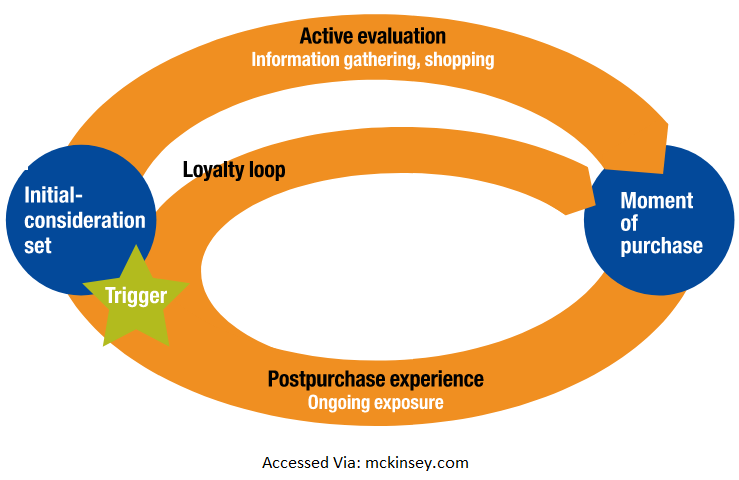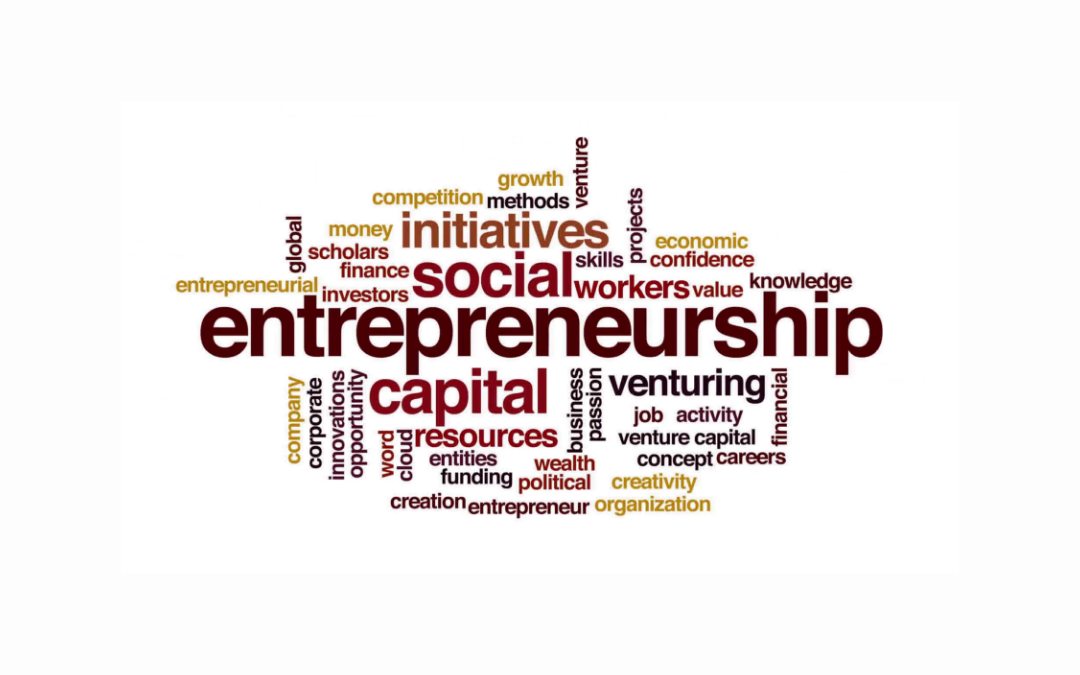McKinsey’s Consumer Decision Journey

When the topic of sales is brought up, it is hard not to think about the sales funnel. While companies around the world continue to use the funnel to understand customers and drive sales (it does have some apparent benefits), the startling fact is that the sales funnel is actually more than a century old.
The business environment has undergone significant changes in the past couple of decades which is enough to render the typical funnel practically redundant. While different iterations of the model have been put forth, the linearity of the process has been questioned time and again.
McKinsey examined the purchase decisions of almost 20,000 customers across 5 industries and 3 continents and discovered that the stages of the customer journey were similar but were cyclical in nature. With these insights, they built a new framework called the Customer Decision Journey (CDJ) which is more relevant to today’s times and the digital era.
Here’s more about CDJ and its importance for startups. For each step, we have put together some Key Questions that entrepreneurs should think about before strategising.

Trigger
McKinsey says that a customer’s decision-making journey starts with a trigger or a stimulus. This is where the customer realises that they are facing a specific problem or pain point and need a solution to it. This starts the process of finding companies that offer the right products or services.
Key Question: What creates a customer need or want?
Initial Consideration Set
Every day, customers are exposed to a variety of different brands, some old and some new. Digital platforms have only added to the amount of exposure that individuals get.
However, when a customer realises the need for a particular product or service, there are some brands that immediately come to mind, before the entire research process starts, thanks to these very impressions. This is called the initial consideration set.
This step highlights the importance of creating brand awareness and reminding customers of your presence, whether they have shopped from you earlier or not. You also have to edge out the competition because the initial consideration set is small and includes only a few brands.
The main idea is to be where the customers are. Understand each sales channel and know where your target audience is likely to be. Be consistent and creative with your customer engagement like newsletters, calls, demos, etc.
Key Questions: Do customers recognise my brand well enough? Will it be the first name they think of?
Active Evaluation
This is the investigative stage of the consumer’s decision-making process. The customers will generally try to gather as much information as they can from multiple sources online and offline. Some people prefer checking out reviews online while others consult their friends and family before making the purchase decision. And, it is also highly probable that customers will go beyond their initial consideration set to explore more options.
In fact, the active evaluation stage has gained significance because between 80-90% of customers today read and trust online reviews before making a decision. For startups, this means that they have to proactively encourage customers to give feedback so that they stand out during this stage of the process.
There is also a heavy influence of paid advertisements during active evaluation. Because the customer is trying to find more and more sources of information, an advertisement placed in the right place can direct users to your webpage.
Key Questions: Does my product satisfy the needs of a customer? Is information about my products readily available?
Moment of Purchase
After all the searching and filtering, customers finally reach the stage where they are ready to buy. It’s the decision-making time. Whether the customer is making this purchase online or offline, you need to give them a final nudge to choose you over your competitors. Offering a small discount coupon or some additional features can tip the scales in your favour.
This is also the stage where you see how your marketing efforts have paid off. You created awareness, gave information but that should result in sales as often as possible. In the traditional funnel, this would be considered the last step in the customer journey.
Key Question: Were my marketing efforts successful in generating sales?
Post-Purchase Experience
This is where the conversion happens from regular customer to a loyal customer. One key reason why the original sales funnel was criticised was that it never talked about the relationship between the brand and the customer after the purchase was made.
McKinsey specifically highlighted the importance of the post-purchase experience and taking customer feedback not only about the product but also their journey with the brand. There are many, many ways to engage customers in this step such as surveys, follow-on calls, appreciation emails, etc.
They also need to be assisted with any problems they face after buying a product or service. For example, someone buying a table may need assistance in putting it together while someone buying a CRM software may need help in setting up the account. Furthermore, there can be instances of damage, warranty or replacement, all of which fall under the post-purchase experience.
Key Question: Does my product/service fulfil customer expectations? Do I have the necessary post-sales processes in place?
Loyalty Loop
This is where the real magic happens! McKinsey talks about 2 kinds of loyalists- one active and the other passive. Active loyalists are the ones that openly show their preference for a certain brand and advocate for the same. In contrast, the passive ones continue using the brand but don’t indulge in outright advocacy.
The task for every company today is to build a set of active loyalists who contribute to sales and also help in acquiring new customers. The “loop” comes into play when a customer thinks of something he/she wants and immediately recalls your brand. Amazon is a great example of a company that has almost perfected this loyalty loop. Think of this yourself, anytime you want a product, isn’t Amazon one of the first names that pop up in your head?
As seen in the CDJ diagram, the loyalty loop also allows customers to bypass the entire process and immediately reach the moment of purchase after the trigger. That’s what startups should strive for.
Key Question: Do customers actively advocate for my brand? Do they immediately think of my brand when they have a specific need?
The Final Word
McKinsey’s CDJ provides a more holistic approach to a customer’s journey with the brand and highlights the key touchpoints that companies should focus on. Loyalty is growing in importance and toughness. While brands try to personalise the customer journey to encourage loyalty, the intense competition allows customers to wander away and try something new.
While this framework is not without flaws, it caters to today’s times better than the sales funnel. Startups should delve deeper into each step and give all of them equal value while designing strategies.






